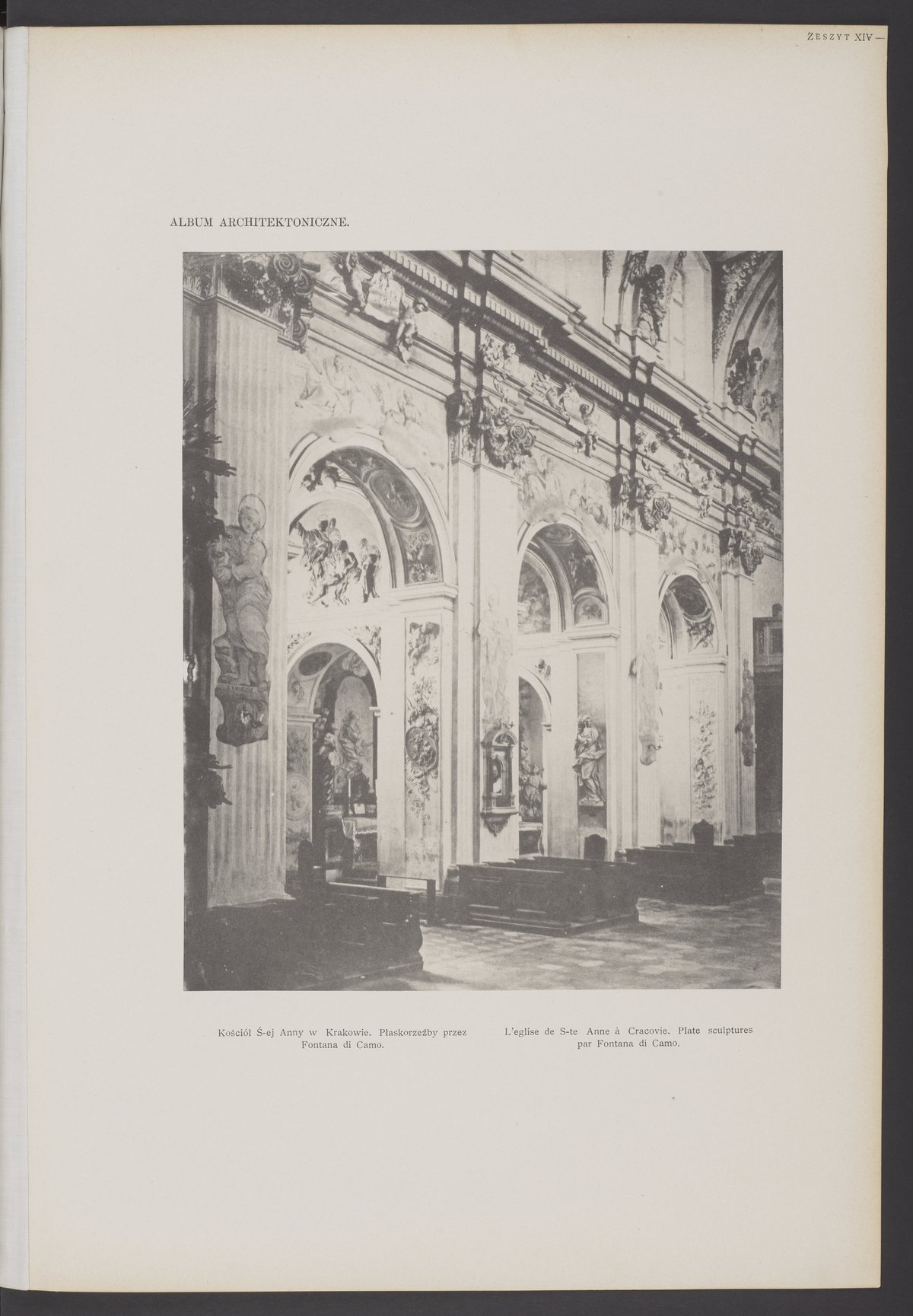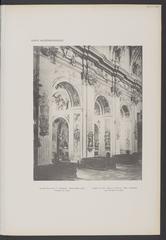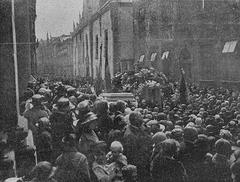
Church of St. Anne Kraków: Complete Guide to Visiting Hours, Tickets, History, and Visitor Tips
Date: 14/06/2025
Introduction
Nestled in Kraków’s UNESCO-listed Old Town, the Church of St. Anne (Kościół św. Anny) stands as a quintessential example of Baroque architecture and a vibrant center of both religious and academic life. Its heritage stretches back to the late 14th century, with deep ties to the Jagiellonian University and a history marked by reconstruction, artistic achievement, and spiritual devotion. Whether you are a history enthusiast, architecture lover, pilgrim, or curious traveler, the Church of St. Anne offers an immersive experience that seamlessly connects Poland’s medieval roots and Baroque splendor. This guide covers everything you need to plan your visit: from the church’s fascinating history, architectural highlights, and spiritual significance, to practical details on visiting hours, ticketing, accessibility, and nearby attractions. For authoritative information and further reading, see the Church of St. Anne official site, Kraków Travel, and Lonely Planet’s guide.
Table of Contents
- Medieval Origins and Early Development
- Ties with the Jagiellonian University
- The Baroque Transformation and St. John Cantius
- Architectural and Artistic Highlights
- Cultural and Academic Significance
- Practical Visitor Information: Hours, Tickets, Accessibility
- Nearby Attractions & Itinerary Planning
- Visitor Experience & Tips
- Frequently Asked Questions (FAQ)
- Conclusion
- Sources & Further Reading
Medieval Origins and Early Development
The earliest record of the Church of St. Anne dates to 1381 in a deed of donation by Sulisław I Nawoja of Grodziec (Wikipedia; SpottingHistory). Originally built of timber, the church’s first structure stood near the center of Kraków’s Old Town, an area established in 1257 and now a UNESCO World Heritage Site (kolegiata-anna.pl). After a fire destroyed the original building in 1407, King Władysław II Jagiełło funded its reconstruction in the Gothic style, ensuring the church’s prominence within the city’s spiritual and civic life (Planergo).
Ties with the Jagiellonian University
The church’s academic significance began in 1418 when King Jagiełło formally attached it to the Kraków Academy (later Jagiellonian University, founded in 1364 and re-founded in 1400). The university was given the right to nominate the parish priest, establishing St. Anne’s as the university collegiate church (kolegiata-anna.pl). This unique relationship, formalized when the church became a collegiate church in 1535, continues to this day and is reflected in frequent academic ceremonies and commemorations (Encircle Photos; Planergo).
The Baroque Transformation and St. John Cantius
The 17th century saw the rise of the cult of St. John Cantius (Jan Kanty), a university professor and later canonized saint. As pilgrims flocked to his tomb, it became clear the existing Gothic structure could not accommodate the crowds. In 1689, it was decided to demolish the old church and build a new Baroque masterpiece, modeled after Rome’s Sant’Andrea della Valle (kolegiata-anna.pl). The project, completed in 1705, was led by renowned architect Tylman van Gameren, who artfully merged Italian Baroque grandeur with Kraków’s urban landscape (Wikipedia; Karnet Krakow Culture).
Architectural and Artistic Highlights
Façade and Exterior
The church’s Baroque façade features twin bell towers, statues of Saints Kazimierz and Florian, and a central Madonna with Child. The lively play of pilasters, cornices, and sculptural elements projects a monumental effect, even on the narrow Świętej Anny Street (Encircle Photos).
Interior
- Nave and Dome: The basilica’s three-aisle plan centers on an airy dome supported by four pendentives, adorned with allegories of the cardinal virtues: Prudence, Temperance, Justice, and Fortitude (Kraków Travel).
- Stucco Decoration: Italian artist Baldassare Fontana created exquisite stucco and reliefs, while the Monti brothers and Karl Dankwart contributed polychrome work (kolegiata-anna.pl).
- High Altar: Designed by Fontana, the main altar features a painting of St. Anne by Jerzy Siemiginowski-Eleuter and is surrounded by gilded columns and statuary (Planergo).
- Tomb of St. John Cantius: The “konfesja” altar in the southern transept contains his sarcophagus, supported by allegorical figures representing the university’s four faculties. The altar is flanked by statues of four saints named John (kolegiata-anna.pl).
- Side Chapels and Epitaphs: Numerous chapels are dedicated to saints and academic patrons, featuring unique altarpieces, marble memorials, and tombs of university professors.
Artistic and Cultural Features
- Academic Monuments: Includes a monument to Nicolaus Copernicus, commemorative plaques, and the tombs of distinguished university scholars (trek.zone).
- Treasury and Sacristy: Preserves valuable liturgical objects, goldsmiths’ works, and portraits of prominent academics (kolegiata-anna.pl).
- Cultural Events: Hosts academic processions, classical concerts, and special Masses during Kraków’s cultural festivals.
Cultural and Academic Significance
St. Anne’s enduring role as the Jagiellonian University’s collegiate church makes it a focal point for academic ceremonies, inaugurations, and graduations. Its spiritual significance is reinforced by ongoing pilgrimage traditions and daily parish life. The church’s integration into Kraków’s academic and urban fabric has made it a symbol of the city’s intellectual and cultural legacy (kolegiata-anna.pl; trek.zone).
Practical Visitor Information
Location & Directions
- Address: ul. św. Anny 11, Kraków Old Town.
- How to Get There: Centrally located, just steps from the Main Market Square and Collegium Maius. Easily reachable on foot from major Old Town attractions, or via public transport (bus/tram stops nearby) (Evendo; Full Suitcase).
Opening Hours
- Monday–Saturday: 9:00 AM – 6:00 PM
- Sunday: 10:00 AM – 5:00 PM
(Hours may vary during holidays, Masses, or special events. Always check the official website)
Admission & Tickets
- Entry: Free for worship and general visiting.
- Donations: Tourists are encouraged to donate (approx. 10 PLN) when visiting outside Mass times.
- Guided Tours: Can be booked through the university or local agencies; fees may apply (trek.zone).
Accessibility
- Wheelchair Access: Available via a side entrance; some interior steps may remain.
- Assistance: Contact the church in advance for accessibility arrangements.
Photography
- Permitted without flash; please be respectful, especially during services (In Your Pocket).
Nearby Attractions & Itinerary Planning
- Collegium Maius: Oldest Jagiellonian University building (0.04 miles).
- Main Market Square: Kraków’s vibrant heart.
- Wawel Castle and Cathedral: 10 minutes’ walk.
- Other Churches: St. Mary’s Basilica, Church of SS Peter & Paul, and more.
- Museums and Parks: Museum of Pharmacy, Bunkier Sztuki, Planty Park.
Combine St. Anne’s with a walking tour of Old Town for a full day of exploration (Lonely Planet).
Visitor Experience & Tips
- Best Time to Visit: Early mornings or late afternoons for fewer crowds; April–May and September–October for mild weather (Full Suitcase).
- Dress Code: Modest attire required—shoulders and knees covered.
- Visit Length: Most spend 30–45 minutes; art and history enthusiasts may linger.
- Language: Most signage is in Polish; consider an English-language guide or app.
- Safety: Kraków Old Town is safe; be mindful of personal belongings.
Frequently Asked Questions (FAQ)
Q: What are the visiting hours for St. Anne Church Kraków?
A: Monday–Saturday: 9:00 AM–6:00 PM; Sunday: 10:00 AM–5:00 PM. Check the official website for updates.
Q: Is there an admission fee?
A: Entry is free; donations are appreciated. Guided tours may have a fee.
Q: Are guided tours available?
A: Yes, through the university or local agencies. Pre-booking is recommended.
Q: Is the church wheelchair accessible?
A: Yes, via a side entrance. Contact the church for assistance.
Q: Can I take photographs inside?
A: Yes, but avoid flash and be respectful during services.
Q: What are nearby attractions?
A: Collegium Maius, Main Market Square, Wawel Castle, and several museums and churches.
Conclusion
The Church of St. Anne in Kraków is a living monument—an architectural masterpiece, a spiritual sanctuary, and a pillar of academic tradition. Its awe-inspiring Baroque interiors, historical treasures, and ongoing role in university and parish life create a rewarding experience for visitors of all backgrounds. Centrally located and easily accessible, St. Anne’s is a highlight of any Kraków itinerary. For the best experience, plan your visit with the latest information, respect the church’s sacred atmosphere, and explore the surrounding historic sites.
For detailed guides, virtual tours, and curated audio experiences, download the Audiala app or consult the resources below.
Sources and Further Reading
- Church of St. Anne, Kraków, Wikipedia
- The University Collegiate Church of St. Anne in Krakow, kolegiata-anna.pl
- Church of St. Anne in Krakow, Planergo
- Church of St. Anne Kraków, Trek.zone
- St. Anne’s Church Kraków, Lonely Planet
- Church of St. Anne Kraków, Encircle Photos
- Visiting St. Anne Church Kraków, Full Suitcase
- Kraków Travel Portal: St. Anne Church
- SpottingHistory: Church of St. Anne
- Karnet Krakow Culture
- In Your Pocket: St. Anne’s Church
- TripHobo: Church of St. Anne
- Evendo: Church of St. Anne
- Rough Guides: Kraków
































































